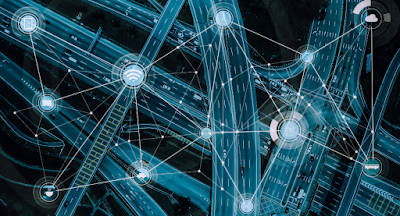Going green can seem like an impossible task, but fortunately, that’s simply not true anymore. Greentech engineers have invented all sorts of amazing products to make going green easier than ever, from organic solar panels to innovative recycling methods that allow us to reuse everyday objects like plastic bottles or aluminum cans over and over again. To help you get started on your journey toward going green, here are seven amazing greentech inventions you probably didn’t know about yet!
Table Of Contents
- What Is GreenTech?
- 1) Turning Air Into Drinking Water
- 2) Smart Roads Emit Their Own Light to Help Night Drivers
- 3) All Cars Are Now Electric and Autonomous
- 4) Plastic Bottles That Fold Into Water Bladders
- 5) Ocean Cleanup Attracts Pollution, Then Destroys It
- 6) Floating Hydroelectric Power Plants
- 7) The Future of Renewable Energy - Hydrogen
- Conclusion
What Is GreenTech?
What Is GreenTech? GreenTech is an industry that works on innovations for energy efficiency, renewable energy sources, sustainability, green transportation and more.
Here are 7 amazing inventions in Green Tech you didn't know were happening.
1) Turning Air Into Drinking Water
Imagine a future where you no longer have to buy bottled water, because you can simply drink the water from the air around you. That's the goal of one green tech company, which has developed a machine that does just that. The machine takes in air, filters it, and then produces clean drinking water. While this technology is still in its early stages, it has the potential to change the way we think about water forever.
Meanwhile, Turning Recycled Plastic into Diesel Fuel: One green tech solution for reducing our reliance on fossil fuels is turning recycled plastic into diesel fuel. One research group in Brazil has been working on converting used polyethylene terephthalate (PET) bottles into biofuel by heating them up and collecting the gas released during the process. So far they've converted three PET bottles per minute, equaling around 2 liters of biodiesel each hour.
2) Smart Roads Emit Their Own Light to Help Night Drivers
We've all been there. It's dark outside, you're driving on a road you're not familiar with, and your headlights just don't seem to be cutting through the darkness. Well, what if the road itself could emit light? That's what one company is hoping to achieve with their new smart roads. The roads would be equipped with sensors that would detect oncoming traffic and then emit a light that would help the driver see better. All of this would happen without any extra electricity consumption or the use of artificial lights.
The goal is to have these green tech innovations installed across highways, airports, campuses, residential areas and other public spaces. Imagine how much more energy efficient our cities will become as we save money from having less streetlights shining at night! It's incredible to think about how many innovations are happening within greentech and cleantech industries today. From electric cars to solar panels, there seems to be no limit when it comes to saving energy and protecting the environment. And that's something we can all get behind!
3) All Cars Are Now Electric and Autonomous
Electric and autonomous cars are the future of transportation, and they're already here. All major car companies are investing in this technology, and it's only a matter of time before every car on the road is electric and autonomous. This is good news for the environment, as electric cars produce zero emissions. The battery in an electric car lasts much longer than an internal combustion engine and can take you twice as far on a single charge. Plus, because these cars will drive themselves there will be less accidents involving human error. Less driving means less pollution from exhaust fumes. But that's not all - green tech means renewable energy, sustainable resources, and environmentally-friendly products which make life easier for everyone.
4) Plastic Bottles That Fold Into Water Bladders
Water is essential for life, but carrying around a water bottle can be a pain. These new water bladders are made from recycled plastic and can fold up into a small pouch when not in use. When you need water, simply unfold the bladder and fill it up. These are perfect for long hikes or days spent outdoors. The bladders also have markings that show how much water they contain so there's no guesswork involved.
These bladders are made from a special type of plastic which is lightweight and durable. This makes them perfect for outdoor use and hiking or camping trips. They fold down to a very small size so you can easily put them into your backpack when not in use. This also helps keep them clean, so they won’t make a mess inside your bag while they’re waiting to be used. Plus, they're collapsible! That means that when you don't need them anymore, you can just collapse them back into their original shape and store them until next time. Talk about easy! And talk about packing light! As soon as I get mine, I'm never going back to disposable bottles again. It'll be amazing being able to refill my water bladders at any fountain or tap!
5) Ocean Cleanup Attracts Pollution, Then Destroys It
When Slat was 18 years old, he formed the organization after being disturbed by a plastic bag while diving. It is dedicated to developing innovative methods for eliminating plastics from the ocean. Existing cleanup methods were not up to the task, so he developed his own. The device would use long floating barriers to trap and concentrate pollution before sending it back to shore where it can be processed and recycled. The method has already been tested with great success, removing 70% of the plastic in an area near San Francisco Bay within 10 weeks. They plan on expanding their efforts to remove 60,000 tons of plastic from the world's oceans per year.
There are some who criticize the technology as expensive and impractical, but others are very optimistic about its potential to keep our waters clean and healthy for all living things that depend on them. Slat and his team have already conducted tests on their technology, with great success. They plan to scale up and deploy their technology more widely, starting with one of the most polluted parts of our oceans: The Garbage Patch in the Pacific. This region, midway between Hawaii and California, has the highest concentration of marine debris in the entire northern hemisphere—six times more than any other area. Due to conflicting weather patterns like the North Pacific Gyre creating currents that form whirlpools that transport debris to the center point, floating trash gathers there (thereby trapping them). The effect of these currents on marine life cannot be underestimated - plastic poses a huge threat to turtles because they often mistake it for food.
6) Floating Hydroelectric Power Plants
Hydroelectric power plants are one of the most efficient and eco-friendly ways to generate electricity. But what if there was a way to make them even more efficient and environmentally friendly? That's where floating hydroelectric power plants come in. These new, experimental plants don't have any need for a dam and can be built almost anywhere. They're just as powerful as traditional ones, but don't take up any space on land! The downside is that they use larger amounts of water, so it's not perfect yet. However, many countries are investing into this kind of energy production because it is much cheaper than oil or coal and doesn't produce any greenhouse gases. If these floating hydroelectric power plants prove to be successful, they could revolutionize the way we get our energy. It will allow us to use greentech sources like solar, wind, and wave energy without relying on fossil fuels or using valuable land resources. There is no telling how great this invention could become if it gets further developed! We hope that these plants can soon be used all over the world.
7) The Future of Renewable Energy - Hydrogen
Hydrogen is the most abundant element in the universe, and it has the potential to be a clean, renewable energy source. Hydrogen can be used to power fuel cells, which generate electricity with no emissions. Fuel cells are three times as efficient as gasoline engines, and they have the potential to dramatically reduce greenhouse gas emissions. The Sun’s rays break water molecules into hydrogen and oxygen. With an adequate supply of water, we could produce enough hydrogen to replace all of our fossil fuels, such as coal and natural gas. Sunlight would be used by solar panels to draw hydrogen from water. Scientists believe that these difficulties can be overcome by employing nanomaterials and new kinds of lenses or reflectors to focus sunlight, even though this procedure would require substantially more space than existing solar technology. One problem with hydrogen is that its production currently requires a great deal of energy, but research shows that carbon capture technologies will also make generating hydrogen from electrolysis more sustainable. Scientists are working on different ways to separate oxygen and release the pure hydrogen gas for us to store or burn for fuel. Carbon capture might also allow us to safely store the excess CO2 emitted during electrolysis, so it doesn't contribute to climate change. Another possible solution is called blue green algae - a type of bacteria that removes CO2 from the atmosphere and releases the stored hydrogen at night when sunlight isn't available. Combined with blue green algae, another technology known as artificial photosynthesis could one day provide us with a nearly limitless supply of affordable, environmentally friendly fuel.
Conclusion
Green tech means finding ways to use technology to protect our environment. These inventions are just a few examples of how green tech is making a difference. Greentech reduces pollution and creates new jobs. It's amazing what can happen when we all work together to make the world a cleaner place!


.png)
.png)



0 Comments